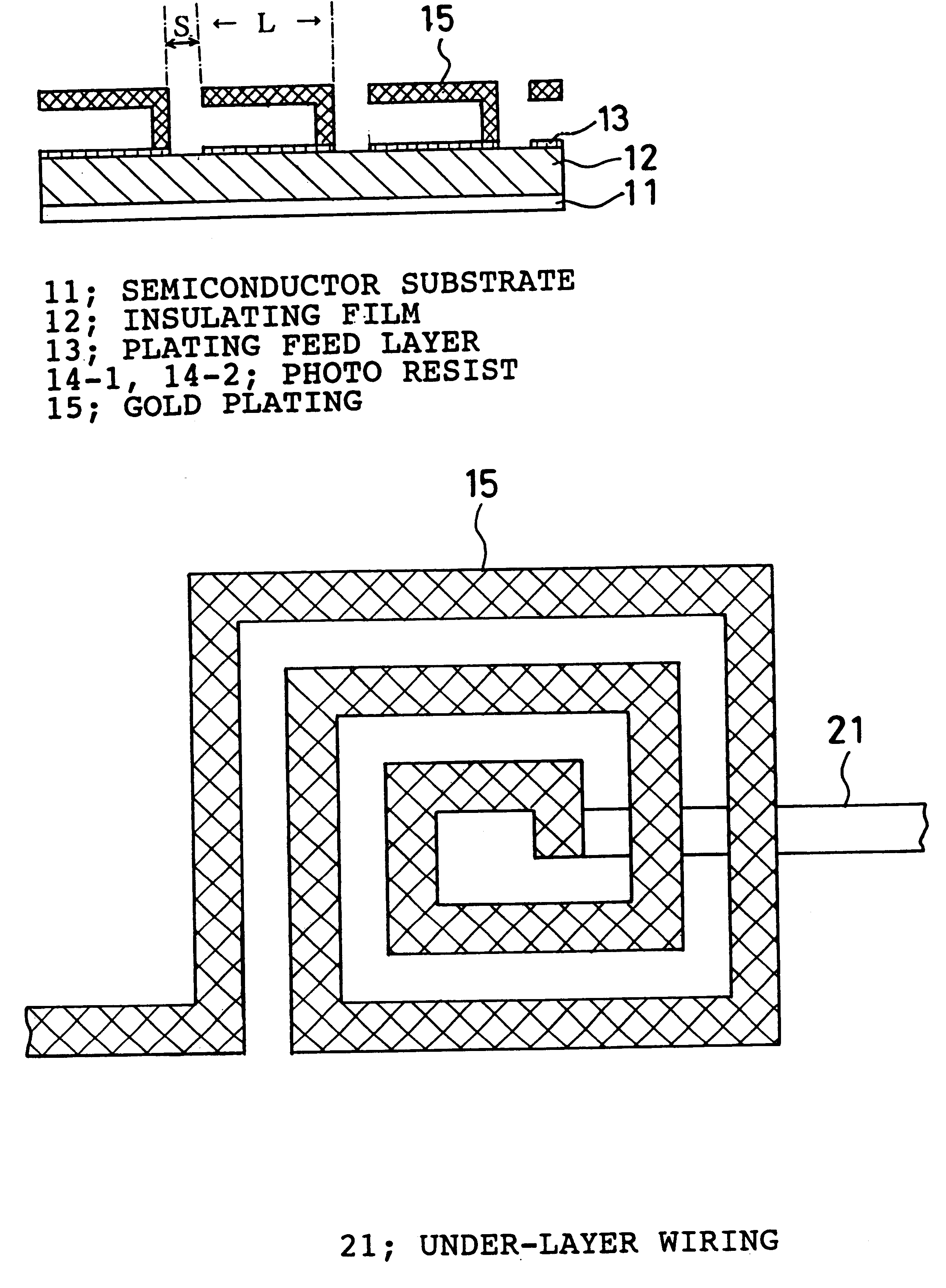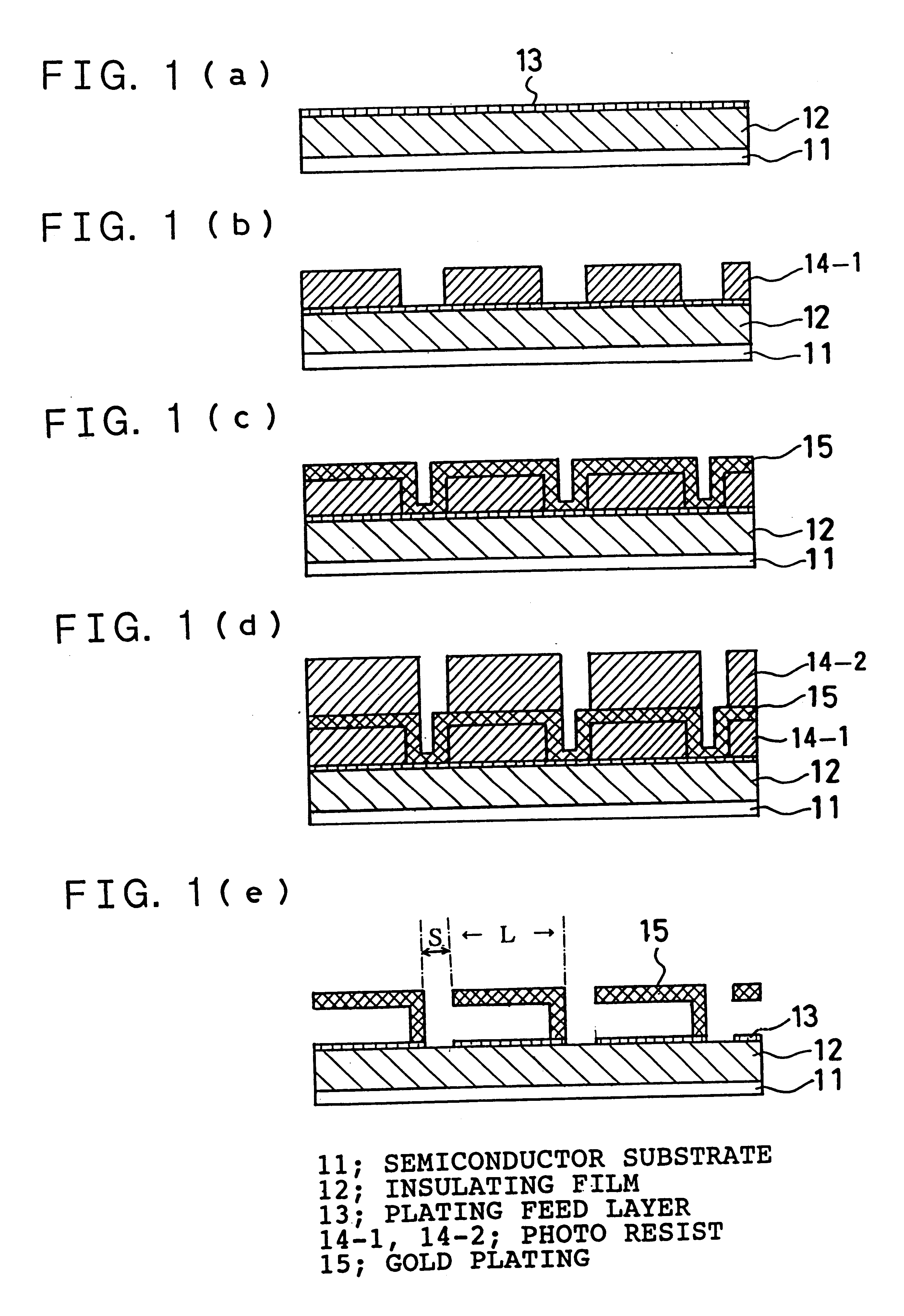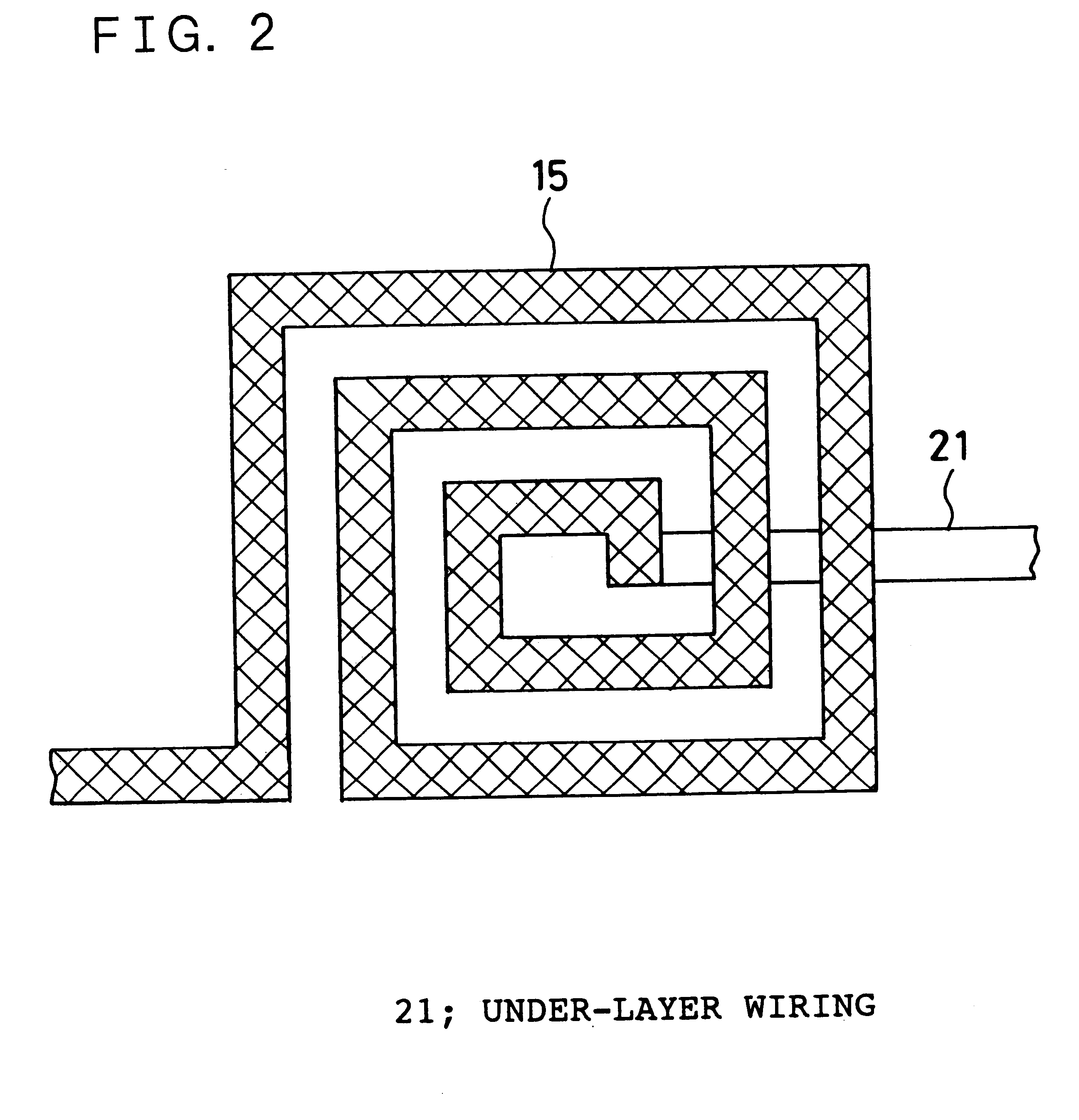Semiconductor device having micro-wires designed for reduced capacitive coupling
a technology of capacitive coupling and micro-wires, which is applied in the direction of semiconductor devices, semiconductor/solid-state device details, electrical apparatus, etc., can solve the problems of narrow space between adjacent micro-wires and increase the area of adjacent side portions of micro-wires, so as to increase the surface area of wiring without increasing capacitance
- Summary
- Abstract
- Description
- Claims
- Application Information
AI Technical Summary
Benefits of technology
Problems solved by technology
Method used
Image
Examples
Embodiment Construction
The present invention is explained in more detail below by describing specific examples with reference to the annexed drawings.
FIG. 1 shows a cross-sectional view showing a first example of the semiconductor device of the present invention in the order of its preparation steps.
At first, a plating feed layer 13 is formed on an insulating film 12 laid on a semiconductor substrate 11 by sputtering or other method (see FIG. 1 (a)).
Next, on the plating feed layer 13, photoresist 14-1 is coated and then exposed and developed in accordance with usual lithographic technology to form a predetermined pattern (see FIG. 1 (b)).
Then, a plating feed layer 13 is applied by spattering etc. and a gold plating 15 of around 300 nm thick is applied using electro- or electroless-plating etc. to form a wiring portion (see FIG. 1(c)).
Subsequently, on the resultant gold plating 15, photoresist 14-2 is coated and then exposed and developed in accordance with usual lithographic technology to form a predeterm...
PUM
 Login to View More
Login to View More Abstract
Description
Claims
Application Information
 Login to View More
Login to View More - R&D
- Intellectual Property
- Life Sciences
- Materials
- Tech Scout
- Unparalleled Data Quality
- Higher Quality Content
- 60% Fewer Hallucinations
Browse by: Latest US Patents, China's latest patents, Technical Efficacy Thesaurus, Application Domain, Technology Topic, Popular Technical Reports.
© 2025 PatSnap. All rights reserved.Legal|Privacy policy|Modern Slavery Act Transparency Statement|Sitemap|About US| Contact US: help@patsnap.com



